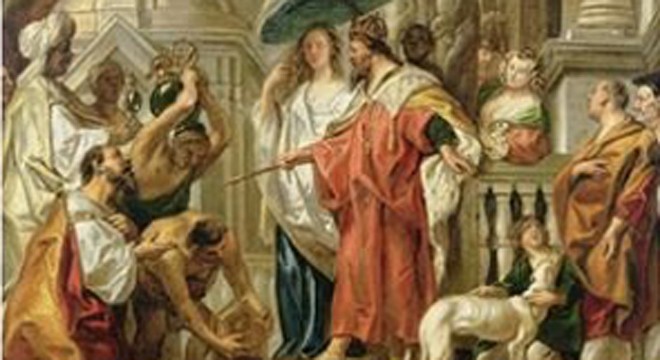

Numerous thinkers of history -- from Edward Gibbon to Arnold Toynbee -- have engaged with the concept of rise, decline and fall of civilisations.
Although German scholar Oswald Spengler’s Decline of the West is equally important, for the purpose of this article we will focus on Gibbon and Toynbee.
Gibbon’s Decline and the Fall of the Roman Empire comprises six volumes, and is a classic, an essential read. And Arnold Toynbee’s The Study of History that runs into 12 volumes is perhaps one of the most extensive works of the 20th century.
Toynbee professed what Richard Evans rightly considers a cyclical theory for history with the concept of the ‘challenge and response’ central to his formulation. He also invokes human agency by propounding another concept of the creative minority and hands over the destiny of the civilisation in the hands of those chosen few constituting that group (creative minority). The great man as the determining factor of history made Toynbee quite a familiar figure for serious practitioners of history in Pakistan.
After experiencing the horrors of the two World Wars (particularly the World War II), Toynbee beat a retreat and sought refuge in religion and, after 1945, he began to profess religion as a regenerative force for the decaying civilisation. But we will return to this point later in the article.
Gibbon, born and bred in ‘the age of reason’ saw the rise of Christianity as the principal catalyst for the decline of the Romans, who previously believed and practised rationality. Thus, the substitution of the ‘rational’ with the ‘irrational’ (Christianity) led them astray and decadence set in. The view latent in Gibbon’s narrative epitomised to the hilt the prevalent discourse punctuated with the ideals of the enlightenment.
Interestingly, I was reminded of the Abbasid period in the Muslim History, the times of Caliph Mamun-ur-Rashid when Mu’tazilite advocated rationality and wielded a lot of influence.
That, of course, was the pinnacle of Muslim civilisation. Those were the days when scholars from all around the world, irrespective of their religion or creed, conglomerated in Bait al Hikamat, an institute meant to create knowledge. Baghdad was then the knowledge centre and the beacon of progress.
However, once Mu’tazilite lost the favour of the Caliph and were decimated mercilessly, the traditionalists barged their way into the central discourse. Doom followed, that subsequently culminated in 1258 when Mongols ransacked Baghdad. Thereafter, various Muslim polities rose and fell but Muslim civilisation merely became a shadow of its previous self.
But, the point worth noting is the significance of the Abbasids as singularly representative of the entire Muslim collectivity. So, it deserves the same scholarly importance that Romans did for Gibbon and Toynbee.
So far, no scholarly effort has ever been undertaken to investigate the decline of the Abbasids that would possibly match the works of these two.
Mughals and Ottomans also set up powerful monarchies but they were parochial in their orientation and texture. Mughals enriched Indian civilisation by giving it Turko-Persian inflection and similarly Ottomans had their own peculiarity in spatial as well as temporal terms.
Back to Gibbon and Toynbee. Despite divergent interpretations regarding the causalities of the decline and fall of civilisation/empire and the difference in analytical categories, (Gibbon takes up the ‘Empire’ as a category whereas Toynbee employs ‘civilisation’ as the social unit for his analysis), both have their discursive engagement with ‘decline’.
It seems pertinent to underline that the ‘empire’ connotes politico-territorial formation which may encompass different socio-cultural streams. So, in the case of the ‘empire’, political is privileged over the social. Besides, the decline and fall of the Roman Empire provided these scholars a prototype after which they formulated their respective though essentially different theories.
Decline and fall of the civilisations as a theme captivated the attention of some of the top historians in the ascendant West, when it had attained civilisational supremacy. They came very close to the prognosis that many Pakistani academics draw while analysing the decline of Muslims.
The prevailing view which is holding Muslims hostage pertaining to their decline in the spatial context of the subcontinent is two pronged -- since we have forsaken the path prescribed to us by the Prophet (pbuh), the decline manifested as a retribution of Allah; and Muslim decline was largely caused by the conspiracy hatched by non-Muslims.
Recent researches in History tend to invert both these hypotheses.
In the subcontinent, politically and culturally, Muslims were impregnable during the reigns of Allaudin Khilji and Jalaluddin Akbar. Both were areligious to say the least. All the promulgated policies were subject to political exigencies, therefore, religious and cultural plurality remained latent in the methods of their governance.
Quite conversely, in the 18th century, when religious piety found its resonance among the top and middle echelons of Muslims, social atomisation crept in and sectarian and denominational differences ripped apart the cultural ethos.
Similarly, the second hypothesis too is tenuous -- because generally the decay started due to internal contradictions. In the 18th century, the differences between the nobility of Iranian descent and Turanis became so stark that their co-existence became almost impossible. Such friction, coupled with institutional collapse, sealed the fate of the Mughals.
Perhaps, it would not be a good idea for the Pakistani scholars to try to make sense of the Muslim decline in the light of luminaries like Gibbon and Toynbee. Some indepth analysis of Abbasids may serve us with an appropriate model -- as Romans did for Gibbon and Toynbee.